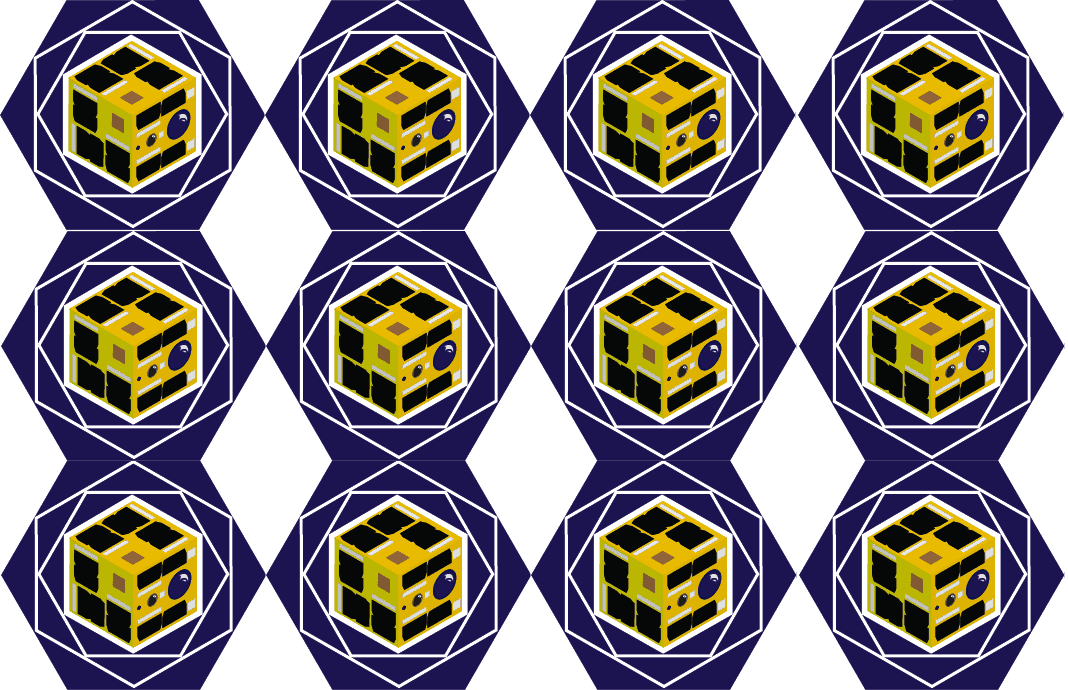Imagine a small cat in outer space orbiting the earth. Now imagine that the cat is solar-powered and can stay up there for years while taking differential photometry measurements. University of Toronto researchers have circumvented the problem of training astronaut-cats to take measurements by instead launching a satellite containing a telescope and a camera the size of a cat into orbit. On February 25, this satellite — the smallest astronomical satellite ever built — launched into orbit from the Satish Dhawan Space Centre in Sriharikota, India. This “nano-satellite,” a cube with 20 centimetre sides that weighs less than seven kilograms, was designed and assembled by a team led by Cordell Grant of the Space Flight Laboratory (SFL) at the University of Toronto Institute for Aerospace Studies (UTIAS). The nano-satellite and a twin are the first of six to be launched, all belonging to the Bright Target Explorer (BRITE) mission.
The nano-satellites contain tiny telescopes that will be aimed at the brightest stars in our galaxy, with cameras that will record changes in the brightness of those stars. Astronomers are most interested in the changes in brightness due to oscillations within the star. Akin to earthquakes, the study of these “starquakes” is called asteroseismology. Astronomers study asteroseismology of the biggest, brightest stars because these are the stars that give off the heavy elements that are integral to the ecology of the universe. Large, luminous stars are particularly amenable to study by nano-satellites, because they do not require a large instrument to detect small changes in brightness.
Some astronomical measurements can be made by looking out into space from Earth, but highly precise measurements of brightness are needed for asteroseismology, and having to look through Earth’s atmosphere would ruin such measurements. If the telescope is located on Earth, then measurements can only be made during clear weather at night; telescopes located in outer space, like the nano-satellites in the BRITE mission, are not bound by these limitations.
The advancement of astronomical science is the scientific purpose of the BRITE mission, but the design and assembly of such a tiny satellite is itself a remarkable feat of engineering. Each BRITE satellite costs between $1–2 million. When compared to the International Space Station — which cost $150 billion — building these million-dollar satellites seems downright thrifty. Such economical exploration of outer space is entirely consistent with the stated vision of the SFL, which is to “revolutionize the space industry by enabling science and technology missions … at least one hundred times cheaper than present day missions, with spacecraft development taking less than two years.” With outer space exploration budgets shrinking, this type of cost-saving innovation is vital for the space industry’s survival. Another consequence of this vision is that a student completing a two-year master’s degree at the SFL would be involved in all stages of spacecraft development, including launch.
One cost-saving measure taken by the scientists behind the BRITE mission was to launch these satellites as part of a seven-satellite payload using an Indian rocket. It would have been impossible to launch the satellites into space from somewhere in Canada, because no suitable Canadian facility exists. The Indian facility in Sriharikota has been launching rockets since early 1970s. Indeed, the Indian Space Research Organisation (ISRO) is now one of the top six space programs in the world. The ISRO plans to send a satellite to Mars later this year and also has the goal of sending people to outer space by 2016. The program’s budget for the 2012–2013 year is $1.3 billion; as points of comparison, the National Aeronautics and Space Administration (NASA) of USA has a budget of $17.7 billion, and the Canadian Space Agency (CSA) has a budget of just under $400 million. The size of a country’s budget will always be a factor in the level of impact a country can have in the area of space exploration, but Cordell Grant’s high-performance, low-cost nano-satellites are examples of the innovation that will help Canada make the most of its space budget.


